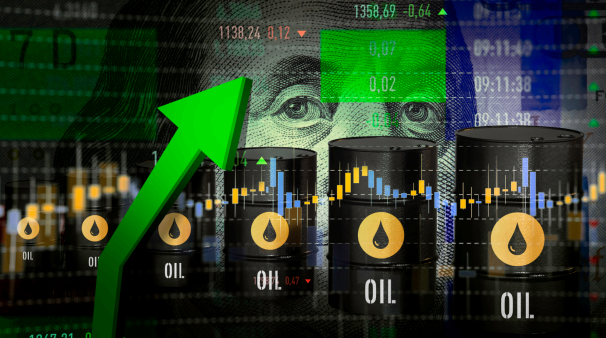Trading is one of the most important aspects, so if you are someone who wants to invest in a good oil then it is better to know more about the fundamental analysis of the company. Investors have many avenues to speculate on the trajectory of crude oil prices. It ranges from engaging in crude oil futures. There are also options to participate in exchange-traded derivatives, energy stocks, and sector mutual funds. Each of these options carries specific risks, which entail exposure to one of the world's most unpredictable commodities. These investment instruments can accessed through either an online brokerage account. Also, a full-service broker.
Table of Content
Viewing Oil as an Asset
Oil holds significant economic importance. It's serving as the primary source of energy. Used for transportation and supplying raw materials for manufacturing. It stands out as the most traded commodity globally. Given its indispensability and the protracted nature of its production process. both consumers and suppliers exhibit a tendency to adjust consumption. And production in response to fluctuating prices. So.
Global Determinants of Oil Prices
The prices of oil and related products are determined globally through various spots. Also, futures markets active participation of producers, consumers, short-term speculators, and long-term investors. Despite the inherent volatility of energy prices. The markets that influence them are characterized by high liquidity. With participants generally possessing well-informed perspectives. For traders lacking extensive expertise. A cautious approach is advisable in navigating these dynamic markets.
Oil Trading Options: Futures, Options, and Spot Markets

Suppose you have many resources and the necessary storage capacity. One way to get crude oil is through direct buy in the spot market. This involves buying crude outright. And it requires the ability to handle shipments. Such as 600,000 barrels from a tanker or 25,000 barrels monthly via pipeline.
For most individuals. A more practical approach involves engaging in crude oil futures or options on oil futures. On the CME Globex futures exchange, a single crude contract represents 1,000 barrels. To trade futures through an online brokerage. You'll need to secure margin requirements and undergo a broker's suitability review, which is generally a manageable process in today's environment.
The application process involves online submissions and a brief waiting period. Some brokerages may have the least account value. It's needed for authorizing futures trading, while others do not. Fees and commissions can also vary.
Trading futures can be facilitated through a full-service broker. Often referred to as a commodity trading advisor (CTA).
Different crude oil futures contracts may involve cash settlement at the end. While others cause the actual transfer of crude at a specified delivery point.
Futures used by crude oil producers. And consumers for hedging production revenue and energy costs. Speculators aim to profit from short-term prices. Its changes are less inclined to take delivery of the underlying commodity end.
A notable example highlighting the dynamics of the oil market occurred in April 2020. When the price of expiring May West Texas Intermediate crude oil futures plummeted to -$37 per barrel, it was before the end. This meant that traders were willing to pay to avoid taking delivery of crude, given the challenges of storage facilities being full during the early stages of the COVID-19 pandemic.
Commodity Exchange-Traded Funds (ETFs) and Exchange-Traded Notes (ETNs)
In recent times, there has been a proliferation of exchange-traded funds (ETFs) and exchange-traded notes (ETNs) designed to provide retail investors with exposure to crude oil, especially for those who may not be able or willing to engage in commodity futures trading.
Crude oil ETFs typically invest directly in crude oil futures, aiming to mirror the performance of the underlying commodity index. However, due to the frequent occurrence of contango in crude oil futures, ETFs like the United States Oil Fund (USO) often incur costs when rolling expiring futures contracts into the next month, introducing a potential source of tracking error.
USO's primary objective is to achieve a daily return within 10% of the front-month contract for West Texas Intermediate crude oil over any 30-day period. In 2020, challenges in the oil market, position limits imposed by future exchanges, and the fund's futures broker temporarily hindered the fund from deploying investment inflows into front-month crude oil futures. While the fund has continued to meet its investment objective by investing in longer-dated oil futures along with the front-month contract, it acknowledges increased uncertainty regarding its ability to stay within the specified tracking error limit in the future.
In November 2021, USO agreed to pay a combined $2.5 million in penalties to the U.S. Securities and Exchange Commission (SEC) and the Commodities Futures Trading Commission (CFTC) to settle allegations of untimely disclosure of position limits imposed by its broker. Commodity ETFs often suffer from negative roll yield as futures contracts expire, making them suitable for short-term speculation only. Despite oil prices reaching seven-year highs above $100 per barrel in March 2022, the USO's price had declined by nearly 90% since its launch in 2006 as of March 1, 2022. On the same date, USO's sister fund, the United States 12 Month Oil
Fund (USL), investing in crude oil futures expiring over the next year, was down 44% since its inception in 2007.
The Invesco DB Oil Fund (DBO) is another commodity ETF. It invests in crude oil futures up to 13 months out, utilising a methodology to minimize negative roll yields and maximize positive ones. With a value of $506.7 million as of March 1, 2022, compared to USO's $2.9 billion, DBO had returned a cumulative -2.6% since its launch in 2007.
In contrast, commodity ETNs, such as iPath Series B S&P GSCI Crude Oil Total Return Index ETN (OIL) and Credit Suisse X-Links Crude Oil Shares Covered Call ETN (USOI), represent contracts between investors and the issuer. The issuer is likely to use crude oil futures contracts to offset exposure, but the ETN itself holds no assets. ETN returns are not subject to tracking error but involve counterparty risk since they are unsecured debt obligations.
A noteworthy advantage of commodity ETNs is the deferral of capital gains taxes until the position is sold, whereas gains on commodity ETFs are taxed annually, even if they remain in the portfolio. Both commodity ETFs and ETNs may offer redemption options under specific circumstances.
Commodity Exchange-Traded Funds (ETFs) and Exchange-Traded Notes (ETNs)
In recent times, there has been a proliferation of exchange-traded funds (ETFs) and exchange-traded notes (ETNs). These are designed to provide retail investors with exposure to crude oil. Especially for those who may not be able or willing to engage in commodity futures trading.
Crude oil ETFs invest in crude oil futures. Aiming to mirror the performance of the underlying commodity index. However, due to the frequent occurrence of contango in crude oil futures, ETFs like the United States Oil Fund (USO) often incur costs when rolling expiring futures contracts into the next month. Introducing a potential source of tracking error.
USO's primary aim is to achieve a daily return. It's within 10% of the front-month contract for West Texas Intermediate crude oil over any 30-day period. In 2020, challenges in the oil market and position limits imposed by future exchanges. And the fund's futures broker hindered the fund. It's from deploying investment inflows into front-month crude oil futures. While the fund has continued to meet its investment aim by investing in longer-dated oil futures. Along with the front-month contract. It acknowledges increased uncertainty about its ability to stay within the specified tracking error limit in the future.
In November 2021. USO agreed to pay a combined $2.5 million in penalties to the U.S. Securities. And Exchange Commission (SEC) and the Commodities Futures Trading Commission (CFTC). It's to settle allegations of disclosure of position limits imposed by its broker.
Commodity ETFs often suffer from negative roll yield as futures contracts expire. Making them suitable for short-term speculation only. Despite oil prices reaching seven-year highs above $100 per barrel in March 2022. The USO's price had declined by 90% since its launch in 2006 as of March 1, 2022. On the same date, USO's sister fund, the United States 12 Month Oil Fund (USL). Investing in crude oil futures expiring over the next year was down 44% since its start in 2007.
The Invesco DB Oil Fund (DBO) is another commodity ETF. It invests in crude oil futures up to 13 months out, utilizing a method to cut negative roll yields. And maximise positive ones. With a value of $506.7 million as of March 1, 2022, compared to USO's $2.9 billion. DBO had returned a cumulative -2.6% since its launch in 2007.
In contrast, commodity ETNs, such as iPath Series B S&P GSCI. Crude Oil Total Return Index ETN (OIL) and Credit Suisse X-Links Crude Oil Shares Covered Call ETN (USOI). It represents contracts between investors and the issuer. The issuer is likely to use crude oil futures contracts to offset exposure, but the ETN itself holds no assets. ETN returns are not subject to tracking errors. But involve counterparty risk since they have unsecured debt obligations.
A noteworthy advantage of commodity ETNs is the deferral of capital gains taxes until the position is sold. Whereas gains on commodity ETFs are taxed, even if they remain in the portfolio. Both commodity ETFs and ETNs may offer redemption options under specific circumstances.


